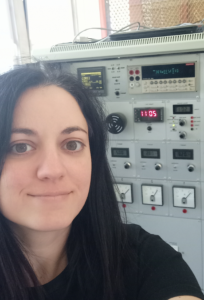
The origin of terrestrial neon: An experimental study of isotopic fractionation of Neon during basalt degassing.
AMPHI OSUC
Zoom
Abstract
The origin of Earth’s volatile elements, crucial for understanding the evolution of the early Solar System, Earth’s formation, and life, remains debated. Noble gases, due to their inertness and high volatility, serve as key tracers for major volatiles like CO2 and H2O in the mantle.
The noble gas signatures in mantle plumes, particularly from Galapagos, Hawaii, and Iceland, suggest a solar-type neon acquired during Earth’s formation.
Two main models explain neon’s origin in the mantle:
• The neon was incorporated into a magma ocean through gravitational capture of a dense primary atmosphere.
• The neon was acquired from planetesimals irradiated by the early Sun during Earth’s accretion.
The residual concentration of mantle volatiles in volcanic rocks and minerals is often influenced by secondary processes and does not reflect primary mantle concentrations. In most oceanic basalts, the volatile phase is dominated by CO2. It’s generally assumed that noble gas concentrations in this phase are similar between vesicles and depend on the extent and mechanism of gas loss from the magma.
This thesis presents pioneering research on synthetic samples whose only volatiles are carbon dioxide (CO₂) and neon by exploring simple models of degassing in a closed system such as:
• A depleted melt affected by a CO2-rich inputs.
• A system where the decompression is initiated.The observed isotopic similarity in natural samples, with values midway between the solar isotopic values and those of solar wind implantation, supports the hypothesis that the Earth’s mantle may have captured a primordial nebula during the early stages of the planet’s formation. Nevertheless, this experimental study presents compelling evidence that isotopic fractionation can occur during various stages of vesicle evolution in magma, suggesting that high isotopic ratios values in natural samples should be interpreted with caution. We conclude that none of the two scenarios of light-volatile acquisition can be for now rejected.


